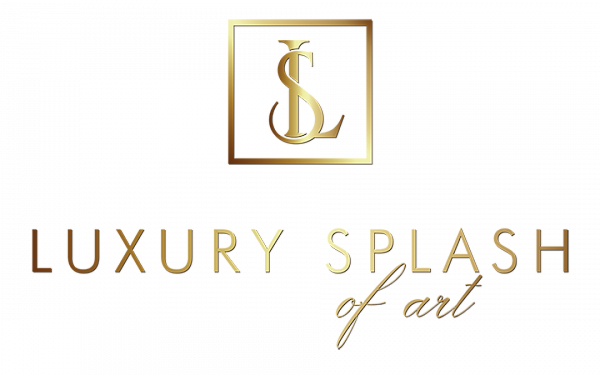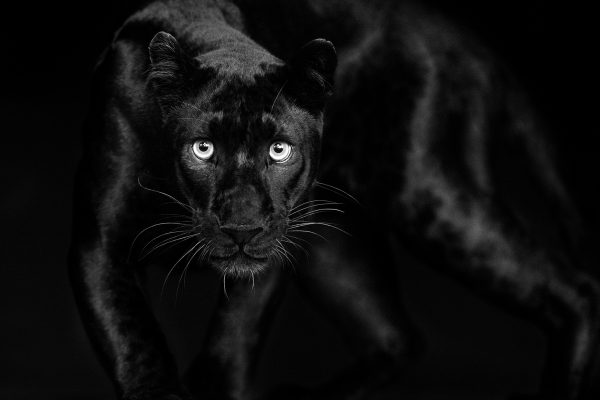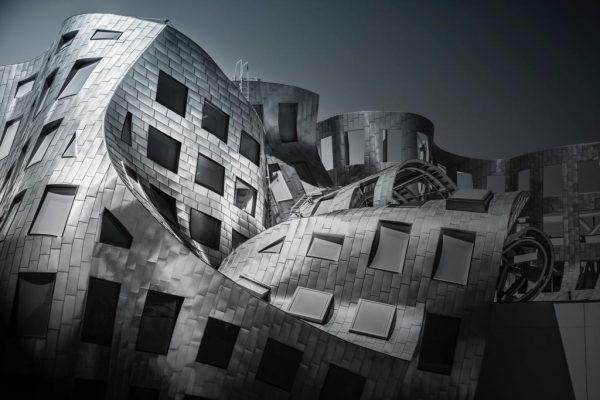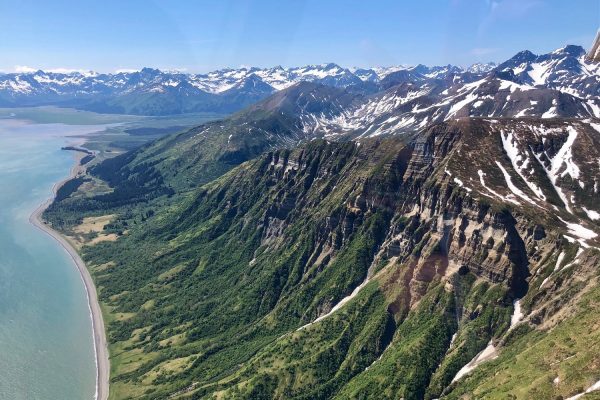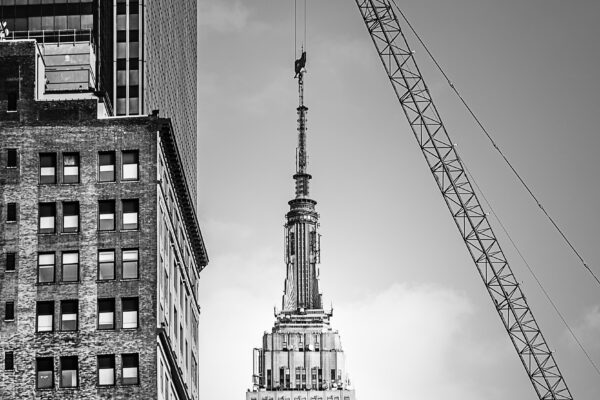Working initially as a painter, Richard has recently turned to making sculpture. Considered an exceptional talent in technical terms, he stands apart from his contemporaries through his uncanny ability to breathe a vital and invigorating “life force” into his art works, regardless of media. Stipl’s disturbing imagery has beguiled the hearts of many institutions and collections around the world. Over the past several years, his work has captured extensive media and critical attention wherever he has exhibited. Richard got an impressive list of group and solo art shows around the world.
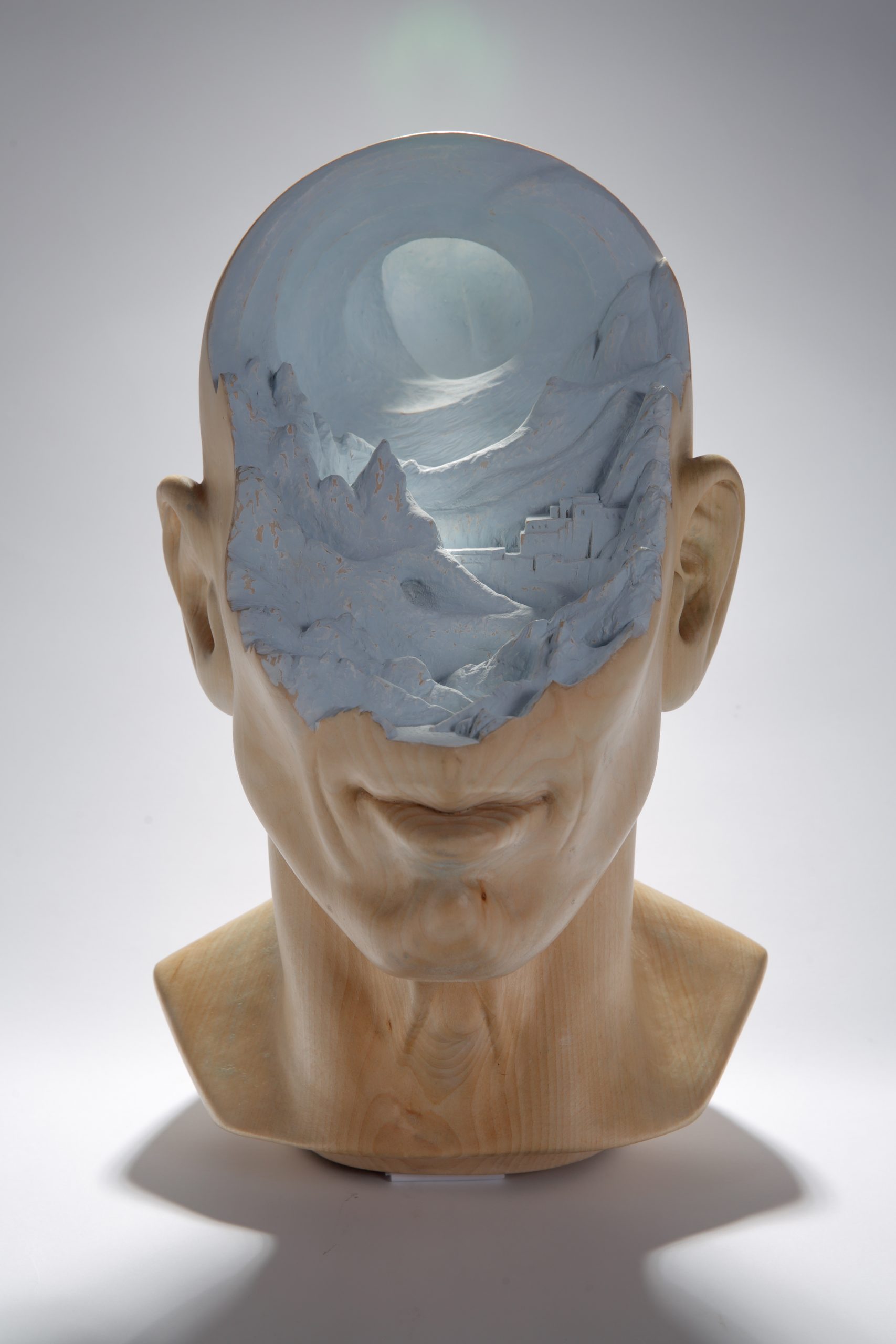
www.ds-foto.cz
LSA: Richard, thank you very much for your time and interest in this interview. You were born in 1968, a time when there were a lot of important political processes on the world stage. There were also many national uprisings, protest movements and armed conflicts depending on the big blocs that were in power at the time, the USA and the USSR.
Would you say that this climate, which also touched your childhood, had an influence on your artistic themes?
Richard Stipl: Soon after I was born, the Soviet armed forces moved in to crush a more liberal form of socialism known as the Prague Spring. Mass protest and self-immolations were of no use. The new hard-line doctrine or era of “Normalization” was implemented throughout much of the seventies. Under this doctrine, all forms of dissent, free speech and free enterprise were silenced and eradicated through political persecutions, imprisonment, forced exile or forced resignations from posts of importance. This was mostly achieved through a vast network of informers and snitches. (It could be your neighbour, best friend or family member) This unspoken fact was known even to schoolchildren and so anything that was said at home on the topic of politics was never discussed amongst playmates or at school. At school, the already very strict classes were laced with a heavy dose of Marxist-Leninism. Russian as a language was mandatory as was membership in the young pioneers a communist youth organisation where the further brain washing of young children and swearing of allegiance to the party was the norm. Shortages of basic products, including food and lineups for everyday necessities were commonplace. The state media trumpeted the motto of the day “Alongside the Soviet Union for all eternity”. Needless to say it was officially impossible to travel abroad to non -communist countries or emigrate. My parents spent roughly 10 years and most of their income from poorly paid jobs (average income was $60 a month) on attempts to get the family past the iron curtain. There were the two failed attempts through former Yugoslavia disguised as vacations with closely guarded collective tours, and after my father switched jobs and spent several more years on bribes and getting permits and exemptions, my father miraculously received permission to travel to Italy along with his family. We boarded the train to Florence, eleven years after the occupying forces invaded. They didn’t get too far, after crossing the Iron curtain the family disembarked in Vienna and asked for political asylum, which was granted however, we had to spend the next year in a refugee camp in squalid conditions. When all the paper work, permits and visits to the embassies that were a possibility for emigration (US, New Zealand, Australia, South Africa and Canada) we were finally told that Canada would accept us as political refugees. In 1980, we arrived in Toronto and were greeted by a former schoolmate of my father who escaped during the Russian invasion and sponsored us. The first 6 months were spent with his wife and their three young boys living in a rickety old bungalow in rural Ontario half way between Toronto and Kingston, situated quite literally in the middle of nowhere. The third day after the family arrived I was thrown on a yellow school bus, full of screaming kids and sent 20km north to the nearest town to go to school without knowing a word of English. Most of the kids were from the native reserves that traded hockey cards at breaks and were unaware of the raging cold war. The next few years were spent moving around Ontario from city to city, with my parents in pursuit of work and me changing schools, sometimes as much as three times a year, before settling in Kitchener-Waterloo. By nineteen, I had moved out of the family nest to Toronto to attend OCAD.

www.ds-foto.cz
LSA: How did you discover your artistic interests?
RS: The first interest and encouragement came from the inner circle of the family. Both my father and grandfather painted, played musical instruments and collected old sculptures, paintings and books. Their interests also included local and regional history, art, and architecture. So it was quite natural for me to pick up drawing and painting in an early age. After our emigration, once it became necessary to pick a direction, art was the obvious choice for me.
LSA: You studied at the Ontario College of Art in Toronto. How did that come about?
RS: It was the nearest art school and I applied with a portfolio of my work and was accepted immediately. I didn’t apply anywhere else and was excited to start living and studying on my own.
LSA: The Ontario College of Art has produced an impressive amount of well-known and successful artists of all genres. Were there any role models there that particularly influenced you and your artistic development?
RS: During my studies, I primarily focused on traditional figurative painting with some figurative sculpture and anatomy on the side. The best painting teacher at the time was Glenn Priestley, a brilliant instructor admired for breaking down any major problem in painting be it, composition, colour mixing, tonality. He really opened my eyes to what is possible in painting. The school itself was a great breeding ground for exchange of ideas and an environment for healthy competition. In addition, the management of the school brought in amazing guest speakers ranging from Jeff Koons, Laurie Anderson to Survival Research Laboratories.
LSA: What would you say were the most difficult moments for you in your art studies?
RS: The difficult part was surviving the first two years that were spent partying, experimenting with every drug possible and looking for a voice. The rest was about perfecting that voice once I had found it. Everything else seemed easy and I enjoyed my time there immensely. I ended up graduating with the governor’s general gold medal, the highest honour for a graduating student in their year. Looking back I tend to see it with a different lens. Having studied art in Canada of the 1990s in a postmodern environment where content took precedent over form, ideas and theory were foremost whereas technical skills were viewed as secondary. It is within these schismatic parameters that the work exists and is still present 30 years on. Since then the opposing sides have become academic but they allow the conflicting forces a unique opportunity to explore these rifts within the ripples they have created. The work hums between nostalgia and post conceptualism, and is for that reason often conflicting, unstable and unsettling.
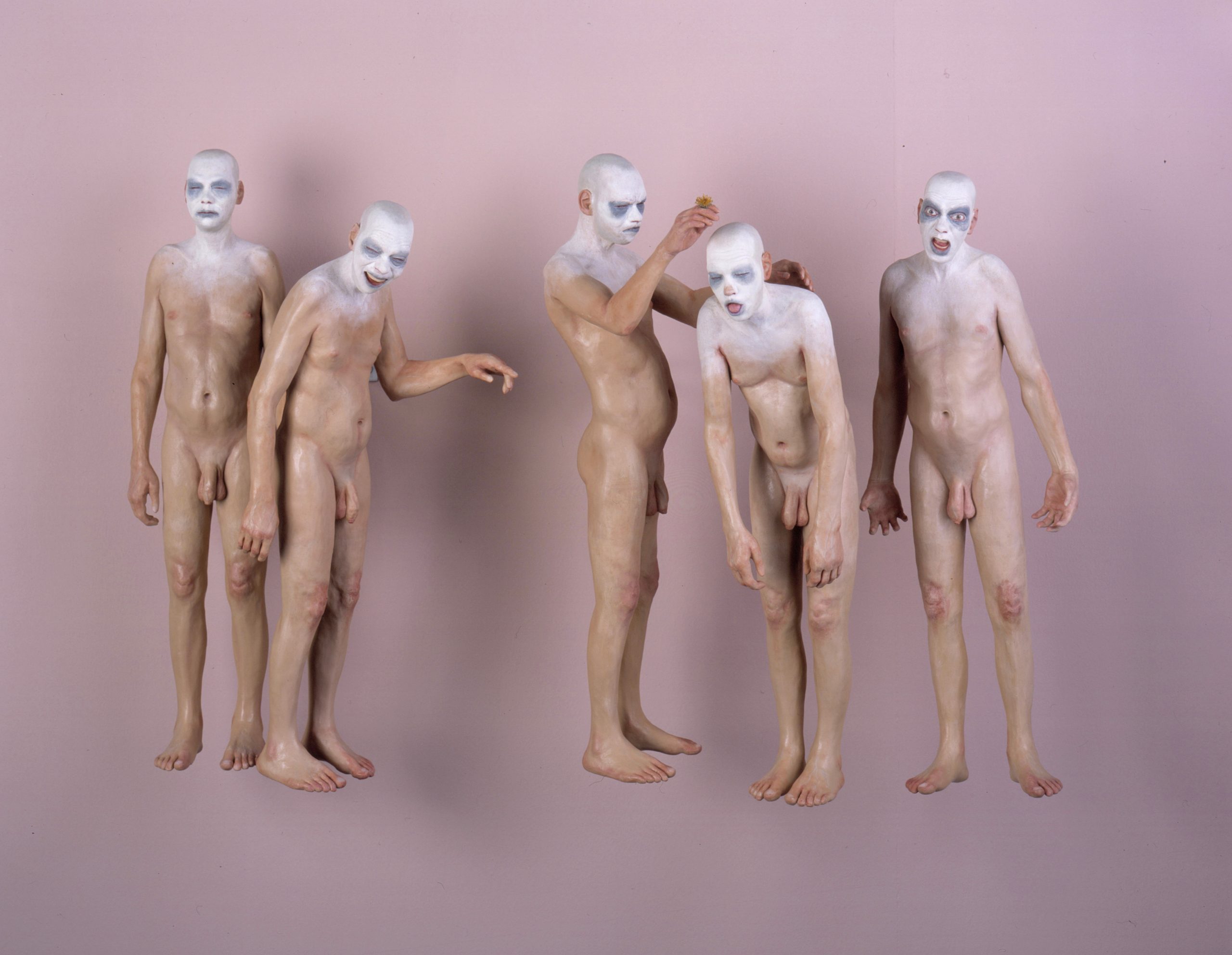
LSA: When I look at your artwork, it seems to me that there has been some kind of evolutionary steps in your artistic development. Figurative painting changes to abstract and moves on to sculptures of various types and materials. Can you tell our readers something about this?
RS: I think it is quite natural for an artist to develop and experiment otherwise stagnation sets in and the work becomes tired and dies. My research into materiality in retrospect represents an unconscious battle between the psychological painting and the physical sculpture. In the end, the physical aspect of art won and sculpture replaced painting as my prime mode of expression with some works combining the two during my ventures into photography and video
LSA: On your website, these elements flow into each other in great landscape-like installations of sculptures. Is this a new step in your work history?
RS: I think of it as an ongoing investigation of the limits of my mind and physical capabilities while exploring new technical possibilities regardless of media and material.
LSA: Many of the characters you create seem like grotesque caricatures of yourself. It seems as if you are dealing ironically with yourself and the society in which you live. What is behind this?
RS: During my transfer period between painting and sculpture, I became aware how bored I had been with painting and how, due to my choices with this medium, it lacked any sense of humour. So what might have seemed as grotesque and irony was my attempt at comic relief.
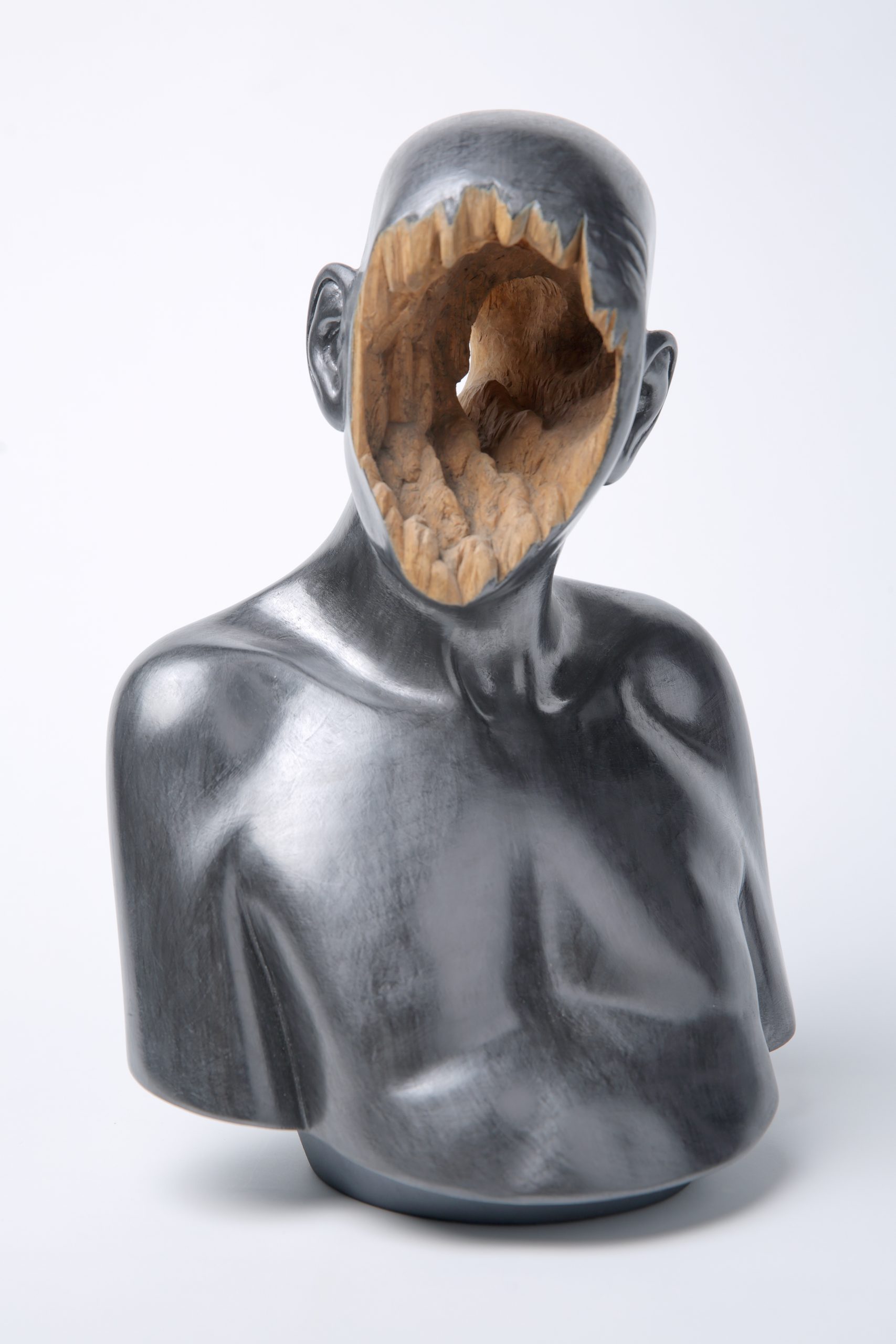
www.ds-foto.cz
LSA: In all your works, including many of your paintings, there is a complexity and depth that is also reflected in the references in the titles. For example, in your series on Plato’s Allegory of the Cave. Caves and the path of light can be found again and again in your works. For example, in some head sculptures. What is that all about?
RS: The layered meanings behind Plato’s Revenge, Simulacrum, Dream of the Prophet and other cave pieces fluctuate between two timeless principles of being: reality and creation or nature and artifice. The reality we create and the one that shapes us. In the case of Simulacrum, the title is a reference to art itself: a likeness or an imitation of a person or a thing originally used to define a painting or a sculpture especially that of a god. Later it came to mean an image without substance or qualities of the original, an illusion, an empty shell, that is a hollow image, hence the idea of a cave. This lends itself to Plato’s Cave, an allegory representing the state of the world and those who inhabit it. The basis of this construct from Plato’s Republic is the perception of reality or truth and the vantage point of that perception. This notion entertains the possibility that the physical world is an illusion or a simulation depending on the viewer and their experience of that world.The cave itself is a premise for Nietzsche’s “If you stare into the abyss the abyss will stare back at you”. It becomes a porthole into the void of time, the sub consciousness of unrecorded history and human thought and first art found in ritualistic animal paintings of our ancestors. The abyss stares back, brings us out of the cave to the present day, and reminds us the distance travelled by humanity. One such nice contemplative thought is that the last artwork will probably also be made in a cave – a place to meditate, dream and these days, to isolate.
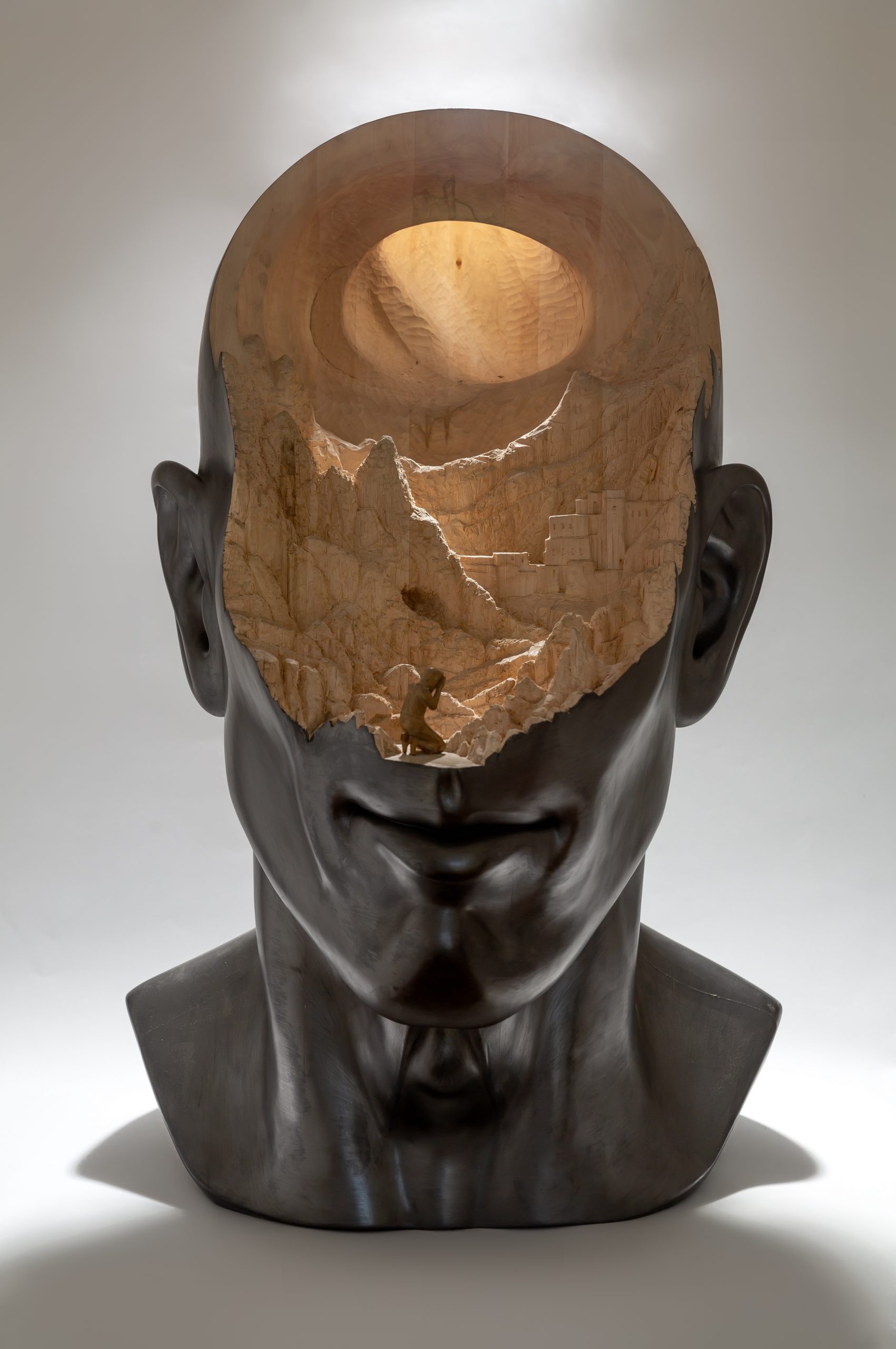
www.ds-foto.cz
LSA: Repeatedly, as a viewer of your works, one finds oneself in a strange confusion of feelings. Your sculptures seem familiar and funny in a way, at the same time disturbing and grotesque. The horror of death and destruction is paired with a crazy, enraptured smile. What moves you to create such depictions?
RS: This confusion you mention is a reference to our ability to hold opposing ideas at the same time, a cognitive dissonance and what we as a species are capable of doing when such a state of mind manifests itself on a large scale.
LSA: It is rare to see an artist who portrays himself in such a multifaceted way, which is usually not flattering for him as an image. Vanity does not seem to be your virtue at first glance. : In addition to the design of your individual figures, the rhythmic groups of figures, which are presented in a variety of ways, are striking. The effects of the individual sculptures are thus diversified and squared in their impact. I have to confess that some of the characters terrify me stunned and at the same time, they also have a tension and attraction in the way in which unheard-of conditions are made visible. It is as if they demonstrate forces that one tries hard to suppress from society, which suddenly become accessible and tempt one to curiously engage with them. What are the backgrounds to this?
RS: While exploring sculpture I lived in Canada and as an immigrant, I was obsessed with what I would have become as a person or artist had he not escaped the communist regime with his family as a child. These persisting thoughts led me to develop a concept of surrogate brothers or effigies that could inhabit parallel universes of unanswerable questions and the big “ifs” of personal history that were otherwise unattainable. A pivotal early work of small scale sculpted heads, this work set off the sculptural work he would produce over the next decade that was created independently from his former work mainly based on figurative painting and ready-made objects. This series of self-portraits captures an emotional state of an individual that is composed into something like a nonlinear diary. The title of this installation is taken from a book written by the 17th century Bohemian philosopher and theologian Jan Amos Comenius. Published in exile, Labyrinth of the world and Paradise of the Heart is an allegorical treatise of a pilgrim wandering the world.

Another set of self-portrait busts stemming out from the first installation was Sleep of Reason. Here the autobiographical sleepers find themselves in a somnambulist state in which they subconsciously gather into roles, positions and groups. Contrary to Goya’s print (The Sleep of Reason Produces Monsters) in which sleep liberates, suppressed emotions and produces monsters, here the artist multiplies and confronts his own self. The next installation of five figures, Futile attempt to know one self, formally refers to its predecessors Labyrinth. and Sleep. The self-portrait heads and busts begin to grow bodies and limbs and are cut just below the waistline, or 1/4 human scale. The figures are then able to create their own world in which the original intent of the surrogate brothers living in parallel worlds is becoming a defunct model. Thus, another attempt at getting to know oneself does not lead in this direction. This becomes more apparent given the initial source of inspiration which was Bosch’s “Cure of Folly” located in the Prado Madrid. In this painting, we won’t find any of the typical Bosch scenes of mayhem but rather a calm composition of four figures in a pastoral landscape. Of interest is the text in the border surrounding the painting (that states a well-known fact that to cure folly all that needs to be done is to remove a stone found in the heads of all such inflicted persons) and a small painted detail (the quack is removing a flower and not the ‘stone’ from the patient’s head). Similarly in the Futile attempt to know Oneself what takes place is a self administered alleviation and a removal of the what-ifs of personal history. In the following series of futile attempt to know one self-II, and III, the figures are developed into full bodies. The question of the theatrical became apparent during this phase as they interacted and engaged in non-verbal communication and ritualised complex gestures. All this paved the way for the final piece in this body of work, Block Sabbath. In this piece there are ten full bodied sculptures, which further serves to escalate the tension and drama found in the former compositions. This piece represented a culmination in a body of work spanning over five years. It was a distilled essence of a state of mind at a given point in my life dedicated to an examination of the self. The concept of substitute brothers is fully developed into a final phase in which I assume the role of a director whose production has gone horribly wrong. If the earlier works makes an attempt at an illusory “cure” by removing a thought, here the full figures are devoid of any inhibitions and set upon themselves with open ferocity and gusto. They obsessively plunge into ritual ceremony of auto cannibalisation, self-ridicule and boredom, incantation and targeted self- destruction. Through this orgy of primitive cruelty and human folly, they hope for a catharsis to elevate themselves from this vicious circle, absolved from their past

LSA: With you, a sculpture is not simply a body. Through the versatile treatment of the surface, openings, clothing elements, etc., you achieve effects that contradict visual habits. What motivated you to do this?
RS: Like many artists throughout the millennia, the human body fascinates me. The sculpting process starts with the self, my body and those close to me. It is neither a self-portrait nor a negation of the self, rather a prototype, anybody. Once a body embodies a time and space it can set out on a journey, adapt a narrative and gather associations, moving between blunt symbolism and raw emotion and most of all surprise me while they mature into compelling visual experiences, which can in some cases take several decades. No work is complete until it is tossed into the sand dunes of art history and becomes a palimpsest of visual vocabulary informed by medieval carving, folk art, excesses of the past century, silent films, iconography, the personal and the social, history, architecture, collective conversation and the psycho biographical vortex. Some pieces patiently wait to be shaped into visual poems; dreams weaved into layered meanings of symbols, myths and narratives of human experience. Recently, I have incorporated in to my work an obsession with collecting objects and items that embody memories or records of the past and are transformed once fused into new contexts. By introducing small amateur wood carvings alongside my sculptures there occurs a magical moment that propels an automatic narrative into uncharted territory and unforeseeable situations and as such, some sculptures are then easy to talk about, others change their ephemeral meaning over time while the best ones insist that their meaning is perfectly clear without further commentary.

www.ds-foto.cz
LSA: What do the materials you work with mean to you? Is there a material that particularly challenges you?
RS: The sculptures were produced using three mirrors and holding a pose and a facial expression until the piece was finished. First they were modelled in clay in 1/4 human scale, later moulds were made and then cast in pigmented beeswax and later coloured with oil paint. Wax, known to the ancient Egyptians, is a material that is sometimes referred to as the shadow of life and it has been said that if treated as a live body (not exposed to extreme heat or cold), will last indefinitely. It’s apex, as a material, was in the 18thc. when it was used to create votive body parts for the sick but also to assemble medical anatomical models for military hospitals. These models are exhibited in Florence at the museum La Specolo. A natural progression from the wax models was to have them cast in metal. So I explored the world of metallurgy through cast aluminium, brass, iron and bronze. Lately, I have become absorbed in wood and wood carving, something I had wanted to do ever since I began sculpting almost 20 years ago. My major influences are now derived from late gothic northern European sculpture and I have been striving to closely study the materials, techniques and surfaces of this period.
LSA: With such a body of work, whose varieties seem hardly limited, I must confess that questions upon questions arise for me. However, we cannot continue the interview indefinitely. What would you say is currently the predominant theme of your artistic work?
RS: What has emerged as important for me is merging of influences, ideas, old concepts put on a shelf and reinventing them to see if they still hold true. The idea of landscape painting and sculpture working in a single piece seems to be the direction I am heading these days. The new piece Dream of the Prophet seems to fulfil this premise and I have a new series planned. It will play on the universal major themes present in art and literature since time began, the calling, the journey, the storm, the labyrinth etc. carved as dramatic landscapes inside large heads.
LSA: You are now living in your old home again. What made you move back?
RS: It has been 12 years since my return and I’d like to think that it has been the right decision. After turning 40 I began to feel unsettled and ungrounded as a result of travelling around so much due to art fairs and exhibitions. Going back and forth between North America and Europe I knew that sooner or later I will need to pick a spot to settle down and so I chose and that was that.

www.ds-foto.cz
LSA: Has this directly influenced your work?
RS: Most definitely, the materials that I now use come as a result of where I find myself. Especially the wood, it has a tradition in the region that is not found in most places and I am also surrounded by expert craftsmen for advice and help and also by foundries for bronze casting. This year I was able to produce a large commission for a sculpture park – the bust Simulacrum is a monstrous seven and half meter sculpture and I was glad to have an excellent support team to carry out this project.
LSA: Has Corona had an influence on your life and your artistic work?
RS: I guess same as everyone, cancelled and delayed exhibitions, no art fairs to generate income etc.
LSA: Do you have any concrete artistic plans for the near or distant future?
RS: I am looking forward to a new studio. Recently I have purchased a building in my native town that is undergoing a reconstruction. Having come full circle, I plan to settle by the end of this year into a large space that is very inspiring for future projects.

LSA: Thank you very much for your time and your thoughts on my questions. Wishing you all the best for you and your family in the pandemic, especially good health. Above all, we wish you continued success in your plans. May art and inspiration always be with you.
RS: Thank you for taking the time to come up with very interesting questions. It has been a pleasure.
Interview by Dieter Hanf
